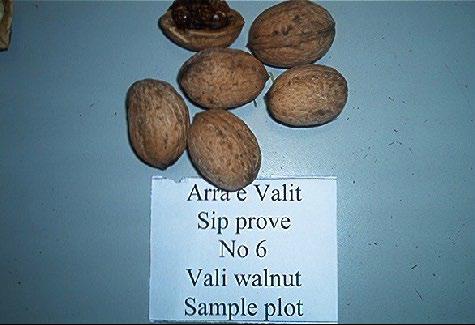Gazmend Zeneli
This project aims on increasing the public awareness about walnut resources in area of Martanesh through educational and promotional activities and to start the restoration of walnut natural ecosystem involving the local community.

English walnut (Juglans regia L.) is an important species in Albania, prized for its valuable timber and high-quality edible nuts. The Val-Martanesh population with ca. 9.5 ha, is the most valuable with individuals of outstanding qualities both in pomological and wood traits, being the last viable remnant of wild walnut populations. Located in a poor region where forest logging and fuel-wood gathering has been the most important income-generating activity, the walnut population and the surrounding forest have been widely destroyed and still are under high pressure, despite their importance. The major issue is still that of resource conflict.
We consider the natural conservation and sustainable use of species and habitats a very important. To achieve this we consider as essential: (1) to have precise information about the relevant components of biodiversity (focusing on species and habitats) and (2) to know the relevant pressures and threats to them. This background information will constitute the starting point for this project. Following this information, the realization of this project will be done by combining its three main components: 1) data review and field survey, 2) restoration of habitat and conservation and 3) an increase in public awareness, especially of local community, through educational and training activities.
We will start with a concise review of indicators on status-pressure-threat for biodiversity (scale and intensity, trends, likely future trends etc.). Several field surveys and meeting with locals will be organized in order to get a clearer idea of their need.
Leaflets, flyers, and educational and promotional materials about walnut and other forest species and their habitats will be distributed to all participants and will be published in local and national media. Restoration of the most damaged area will start with tree plantings.
Finally, on the basis of the practical recommendations for reducing negative environmental impacts would local population needs, a detailed series of be produced.